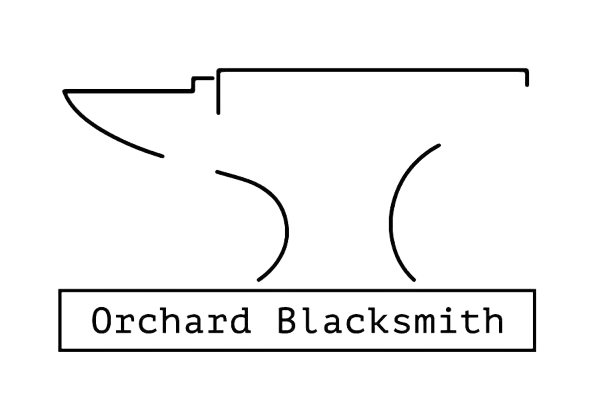Tempering 101: What does it mean and why it matters
When most people imagine blacksmithing, they think of hammering glowing hot steel into shape. But what happens after the steel is forged can be just as important — especially if you want a tool or blade to last. That’s where tempering comes in.
In this post, we’ll cover what tempering actually is, why it’s critical to the quality of your work, and how to do it properly.
What Is Tempering?
Tempering is a heat treatment process performed on steel after it has been hardened through quenching. While quenching makes steel extremely hard, it also makes it very brittle. That brittleness can lead to cracking, chipping, or catastrophic failure under stress.
Tempering reduces that brittleness by reheating the steel to a lower temperature — usually between 300°F and 600°F (150°C–315°C) — and then letting it cool gradually.
The result? Steel that is still hard, but now also tough and resilient.
Why Tempering Matters
Here’s why tempering is absolutely essential:
Reduces internal stress: Quenching causes microstructural changes that can trap stress in the steel. Tempering relieves that stress.
Improves durability: Tempered steel resists breaking or shattering under load.
Balances hardness and toughness: For blades, tools, or moving parts, this balance is crucial — you want a sharp edge or strong surface, but also some flexibility.
Customizes performance: You can control how tough or hard a piece is by adjusting the tempering temperature and time.
⚙️ A Simple Example: Forging a Knife
Let’s say you’ve forged a knife and hardened the blade by heating it to critical temperature and quenching it in oil. At this point, the knife is rock-hard — but also so brittle that dropping it could snap the blade.
You place the hardened blade into a tempering oven set to 400°F (204°C) for 1 to 2 hours, then let it cool slowly. After tempering, the knife is still hard enough to hold an edge, but now it has the toughness needed for real-world use.
How Long Should You Temper?
Most tools and blades are tempered for 1 to 2 hours, depending on thickness.
Some makers recommend tempering twice — two cycles of heating and cooling — to ensure uniform stress relief.
It’s also important to temper soon after hardening to prevent cracks from forming in the brittle, freshly quenched steel.
Tools for Tempering
Toaster oven or kitchen oven (great for knives and small tools)
Forge or propane torch (requires experience with heat colour control)
Digital heat-treating oven (best for precision work)
Wire brush / sandpaper to clean surface before colour tempering
Final Thoughts: Don’t Skip It
Tempering might not be as flashy as hammering or quenching, but it’s what makes your work usable and reliable. Whether you’re forging a knife, a hammer, or a set of tongs, tempering gives your steel the resilience it needs to perform under pressure.
If you would like to discuss a potential project, please do not hesitate to contact us.
